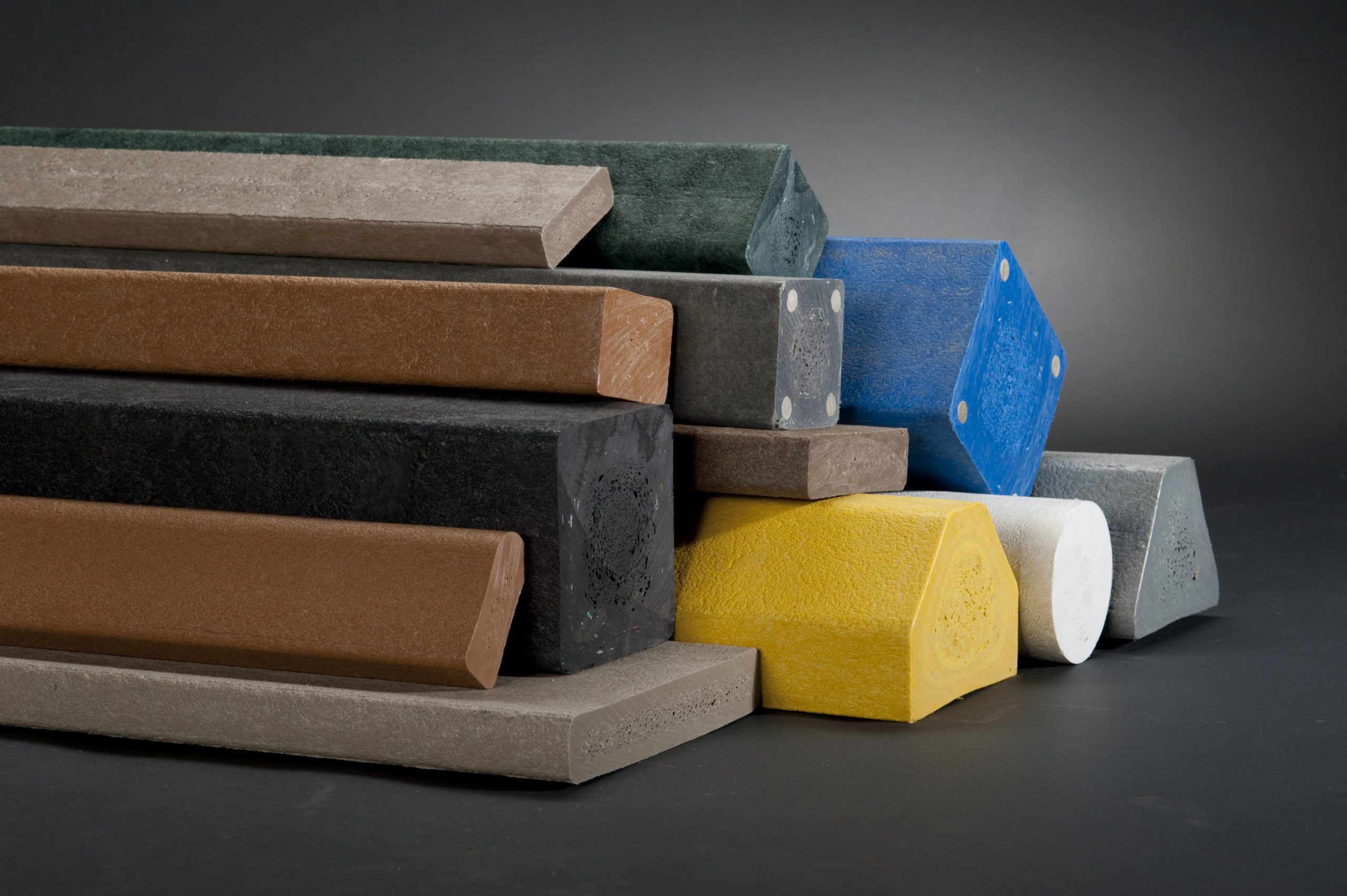Opening the Ecological Advantages of Recycled Compounds in Construction and Design
In the realm of building and style, the utilization of recycled compounds holds considerable pledge for boosting sustainability methods and lowering environmental impact. The change towards a more sustainable future in these sectors pivots on opening the complete potential of recycled composites.

Environmental Influence Decrease
The decrease of environmental impact through using recycled compounds in building and style plays a crucial duty in sustainable practices. By including recycled compounds into structure products, the building market can substantially decrease its carbon impact and contribute to a more eco-friendly future. These sustainable products, made from repurposed plastics, wood fibers, or various other recycled aspects, use a feasible choice to standard construction products without endangering on top quality or resilience.
Recycled compounds assist draw away waste from landfills and minimize the need for extracting basic materials, thus conserving natural deposits. In addition, the manufacturing process of these composites usually consumes much less power and releases less greenhouse gases contrasted to creating virgin materials (composites). This change towards using recycled composites not just reduces ecological damage but also promotes a circular economic climate by urging the reuse of materials that would otherwise be disposed of
Waste Reduction
With an emphasis on lessening waste in building and style, the assimilation of recycled composites supplies a sustainable remedy to lower ecological effect. Waste minimization is an important element of lasting practices, and using recycled compounds offers a chance to achieve this objective effectively. By utilizing products that have actually already served their preliminary function, such as recycled plastics or reclaimed wood fibers, the building and design sectors can substantially minimize the amount of waste generated and sent to landfills.
Recycled composites have the possible to divert significant amounts of waste from standard disposal approaches, adding to an extra round economy where sources are utilized efficiently. Additionally, the production process of recycled compounds commonly consumes less energy and generates fewer exhausts compared to virgin products, even more reducing the environmental impact of building and design tasks.
Carrying out waste reduction techniques via the unification of recycled composites not only assists in conserving all-natural sources however additionally promotes a more lasting approach to structure and making for a greener future.
Energy Conservation
Incorporating recycled composites not only lessens waste in construction and design but also plays a critical function in enhancing energy preservation techniques within the sector. The use of recycled composites in building can dramatically add to power preservation through numerous methods. The production of virgin materials usually needs significant energy inputs, whereas using recycled composites consumes less energy, thereby lowering total energy consumption. Additionally, including recycled compounds can add to much better insulation homes in buildings, minimizing the requirement for excessive home heating or air conditioning, and consequently reducing energy usage for environment control. Moreover, the light-weight nature of several recycled compounds can cause lighter frameworks, calling for less power for transportation and installation. By advertising the usage of recycled composites in construction and design, the sector can make considerable strides in the direction of attaining power performance and minimizing its carbon footprint, ultimately contributing to a much more lasting developed setting.
Carbon Impact Reduction
Enhancing sustainability techniques through the utilization of recycled compounds in building and construction and design significantly decreases the carbon footprint of the industry. By including recycled products into the manufacturing of composites, the demand for virgin resources lowers, causing reduced energy usage and greenhouse gas exhausts linked with traditional manufacturing procedures. This reduction in carbon impact is essential in combating environment adjustment and advertising an extra eco-friendly approach to building and style.
Additionally, using recycled composites also aids in drawing away waste from landfills, therefore minimizing the ecological effect of disposal and promoting a circular economy. The carbon impact decrease accomplished via the adoption of recycled composites lines up with the worldwide push in the direction of lasting practices and the decrease of industrial discharges. It showcases a commitment to liable resource administration and a next change towards greener alternatives in the building and construction and design markets. Ultimately, by focusing on the assimilation of recycled compounds, the market can make considerable strides in decreasing its carbon impact and adding to an extra sustainable future.
Sustainable Future
The combination of recycled composites in construction and style not just addresses immediate environmental issues yet also lays a strong structure for a lasting future in the market. By integrating recycled compounds into building products and products, the construction and layout markets can considerably minimize their reliance on virgin sources, causing an extra circular economic situation. This shift towards sustainability is critical for minimizing the ecological effect of traditional building practices, which commonly result in high degrees of waste generation and resource deficiency.

Verdict
To conclude, recycled composites provide considerable environmental advantages in construction and style by lowering ecological influence, decreasing waste, preserving energy, lowering carbon impact, and advertising a sustainable future. Accepting the use of recycled compounds can add to a more environmentally-friendly method to building and design, inevitably causing a more sustainable and greener future for all.
The reduction of environmental effect with the usage of recycled compounds in building and layout plays a critical duty in sustainable techniques.With an emphasis on decreasing waste in building and design, the combination of recycled composites offers a lasting option to decrease environmental impact. By advertising the usage of recycled compounds in construction and layout, the sector can make substantial official site strides in the direction of achieving energy performance and decreasing its carbon footprint, ultimately contributing to a much more sustainable developed atmosphere.
